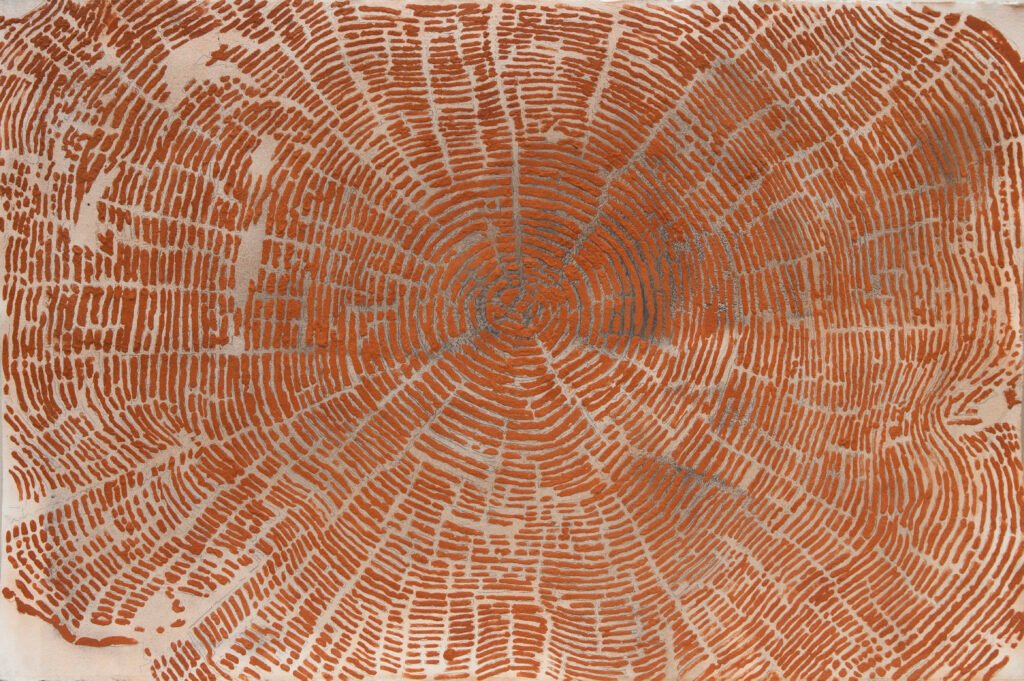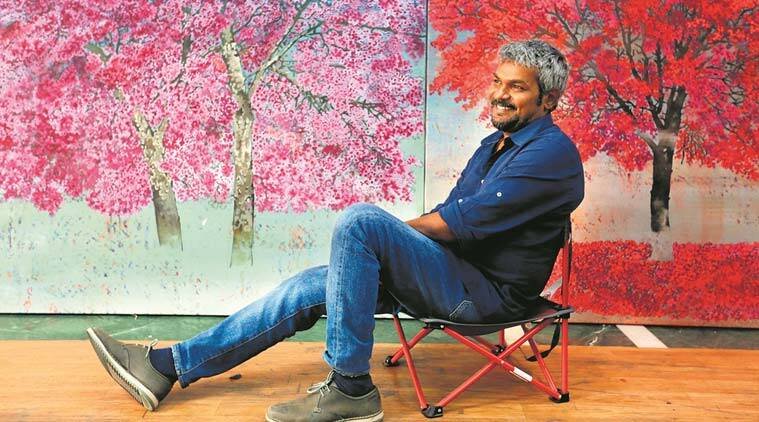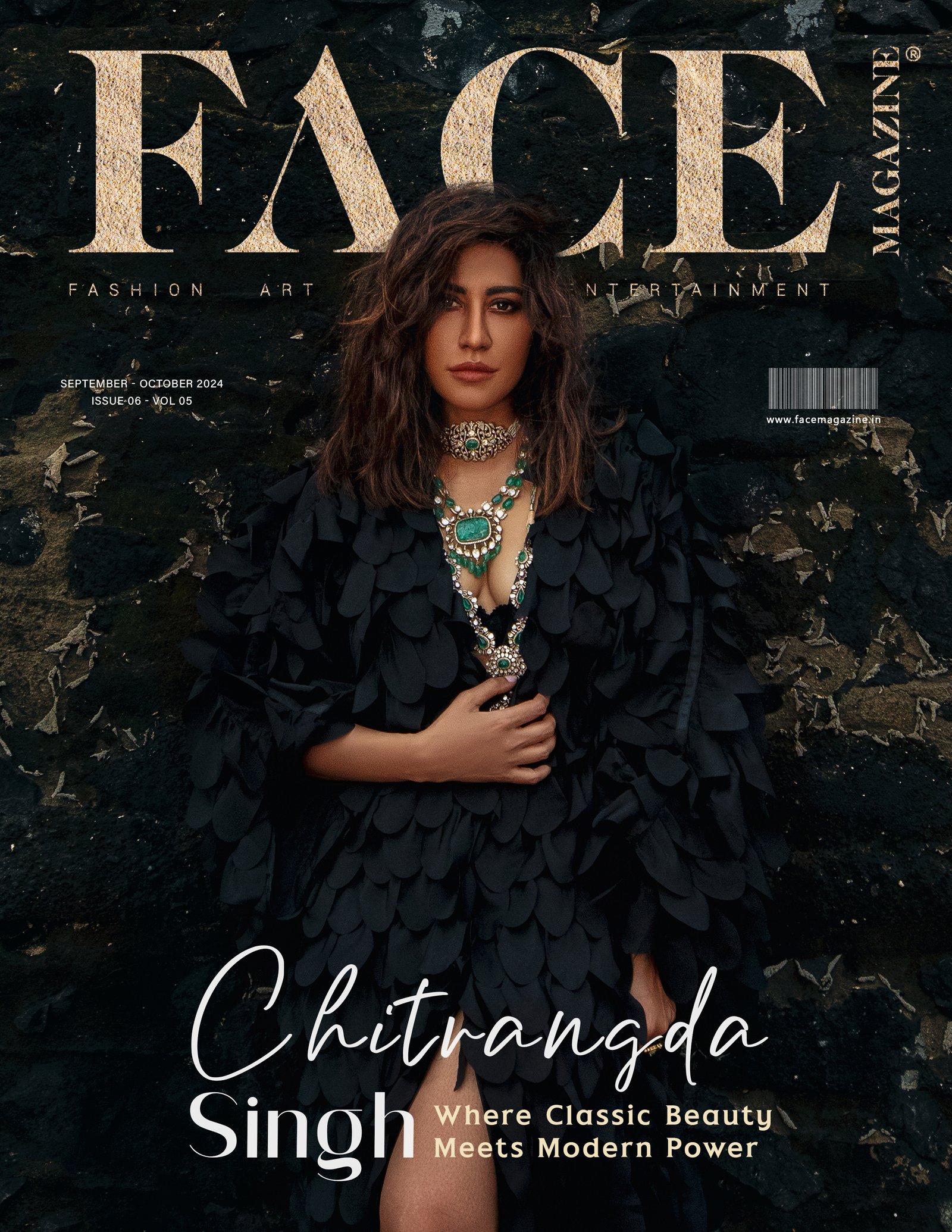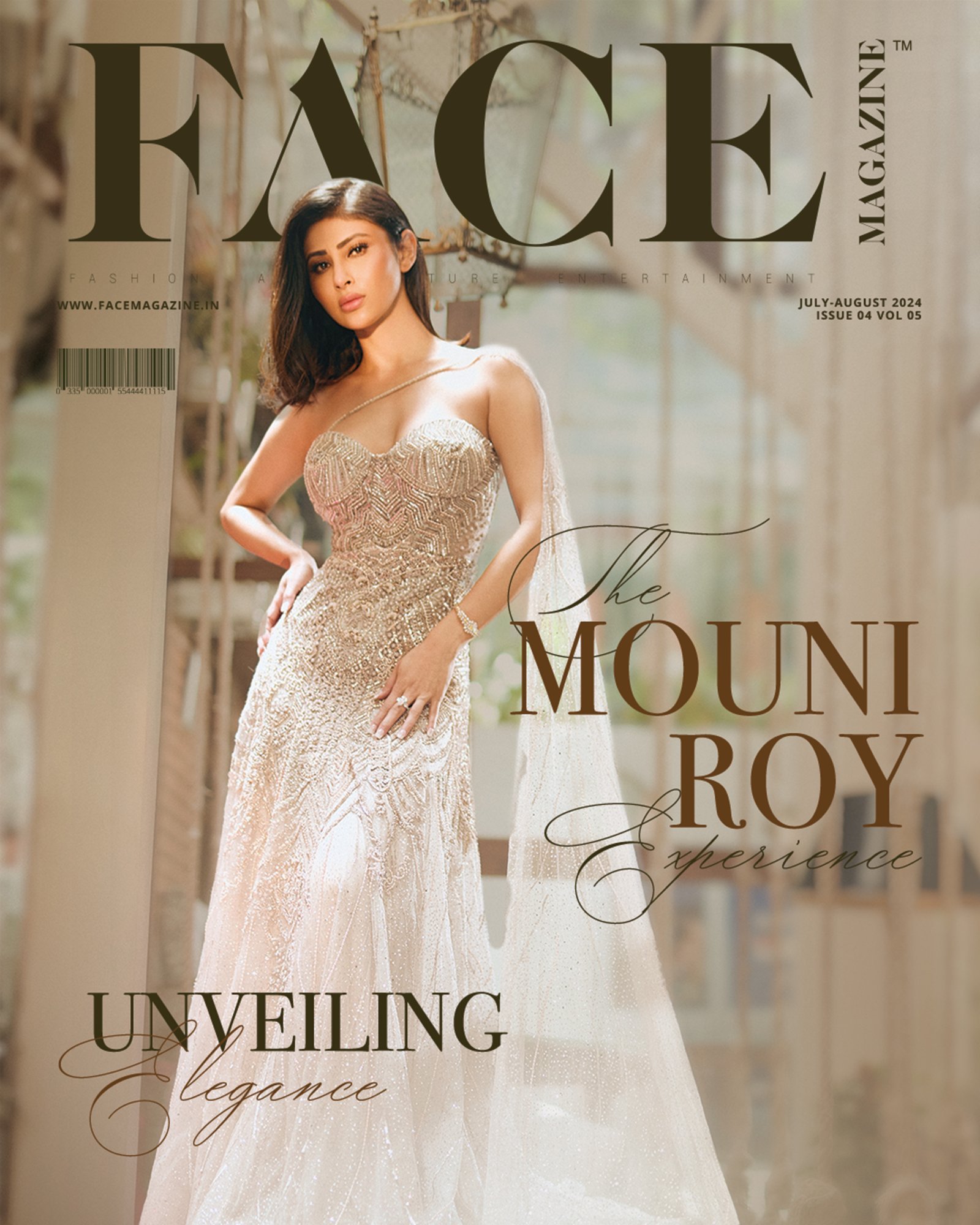G R Iranna is an artist whose work transcends the boundaries of time and space. Born in 1970, his work is mature and profound.
Many of Iranna`s paintings depict pain as an abstract force that is translated visually in bruised textures and razor-sharp cutting edges. His painting has always been far removed from an overriding, postmodern logic. Instead, Iranna uses the idealistic, representative and modernist language of Indian contemporary art. His most recent works are all visions of resistance. In just a glance, one can tell a sense of massive dynamic energy that pervades the surfaces. An energy that is fuelled by torment and the struggle against it. Upon further inspection, one sees that these conflicts being played out on the surface are present also in those between one colour and another, between figure and hue, and between the crudeness and the expertise employed.
These works, set on canvas as well as tarpaulin, are symbolic of an important change in Iranna`s work. Maybe a symbolic event of an attempt to break free from an establishment, or a style that is beginning to become claustrophobic. The large, fundamental figure that used to appear in Iranna`s early paintings emerges only twice in this later series, and though the artist continues to employ repeated motifs in his work, they seem now to be less figurative, leaning more towards form.
These pieces seem to have an almost romantic undertone: the result of Iranna`s attempt to break away from his own mould and reform his work. They cater to contemporary expectations and reflect his need to pander many contradictory demands. Those of society as well as those of the artist himself.
In 1992, GR Iranna acquired his Bachelor of Fine Arts Degree from the College of Visual Art, in Gulbarga. Two years later, he got his Master`s degree in painting from the College of Art, New Delhi. Between 1999 and 2000 he acted as artist-in-residence at Wimbledon School of Art, London.
Iranna`s first one-man show was held in 1992 at the College of Visual Art, Gulbarga. Since then, he has shown at Delhi Art Gallery and Jehangir Art Gallery, Mumbai in 1995; Gallery Espace, New Delhi in 1998; `In the Shadow of Buddha` at Gallery Martini, Hong Kong in 1999; Wimbledon School of Art, London in 2000; Maulana Azad Centre for Indian Culture, Cairo in 2000 and The British Council & The Guild Art Gallery in 2001. Iranna has also participated in several group shows including at the Chitra Kala Parishad, Bangalore in 1990; Schoo`s Gallery, Amsterdam, Holland in 1995; Vedanta Art Gallery, Chicago, the U.S.A. in 1998; `Icons of the Millennium` at Gallery Lakeeren, Mumbai in 1999 and `Black & White` at Art Today, New Delhi in 2000.
Iranna has received national and international recognition throughout his career. His awards include those at the All India Exhibition in Mysore and the College of Visual Art, New Delhi in 1992-92, the Bansi Parmimu Memorial Committee, New Delhi and the Delhi College of Art in 1993. In the same year, he won the MF Husain and Ram Kumar selection award at `In Search of Talent` by Vadhera Art Gallery, New Delhi. He has also been honoured in 1997 with a National Award from the Lalit Kala Academy and the AIFACS Award, at the show `50 years of Art in Independent India` in New Delhi.
How has your childhood in a farmer’s family been reflected in your art?
I come from Bijapur, Karnataka. As you mentioned my father is a farmer. As a child, I would do farming and I consider myself a son of the soil. In a lot of the work I did in 1998, I have used several symbols of the farming community. In fact, I did a series of work which had farmers and farming as the central motif. As a child, I also studied in a Gurukul (a system of education where the student resides with the teacher). I lived in an ashram for almost seven years, which itself was a big influence. I learned to understand my roots, and my ancestors, and used a lot of that understanding in my paintings. It wasn’t easy though it was quite a struggle.
You began by painting oil on canvas. But now you use several different mediums.
Yes, in the last five or six years I have moved to tarpaulin, and I think I am the only artist in India to do that. It suits me very well as a medium. I like my paintings to reflect strength, to reflect energy, and tarpaulin is an extremely strong medium. I have also used rubber solutions on canvas.
What is the process of creating a painting or a piece of art for you?
I begin with a blank canvas and a blank mind. I haven’t decided what I am going to paint yet. If you know what you are going to create, there is no creativity. A child never knows what he is going to do next, and he is the most creative.
I start with a blank canvas and mind, and then begin playing with the canvas, and have a dialogue with it. Stories and images emerge out of that dialogue.
What have been the influences on your work?
I draw my major influence from the several exhibitions that Delhi allows me to see. Sometimes, some ideas get lodged in my mind, and sometimes, new techniques. But I don’t deliberately go out of my way to translate those experiences onto canvas. It comes through itself. I don’t have to do it consciously.
What is your major preoccupation as an artist?
The antithetical structure of the world intrigues me, simply because of the inherent dualities that govern life. Although it is rather difficult to comprehend why, if life is movement, one seeks stillness, if a journey, one seeks destination and if transient, one desires permanence. It is as if we are trying to negotiate between the body and the mind, surface and depth, the past and present.
Your work is overwhelmingly abstract. What attracts you to abstract concepts?
I think Buddhism influences me in a way. I have read a lot of Buddhist philosophy; I have studied art in Ajanta and Ellora. My painting, Ananda, is influenced by Buddhist philosophy. You will see there is no figure in that work, it is all abstract. Ananda means joy, which is an abstract concept that has no figure or form. I did a lot of paintings influenced by Buddhist thought between 1995 to 1998.










